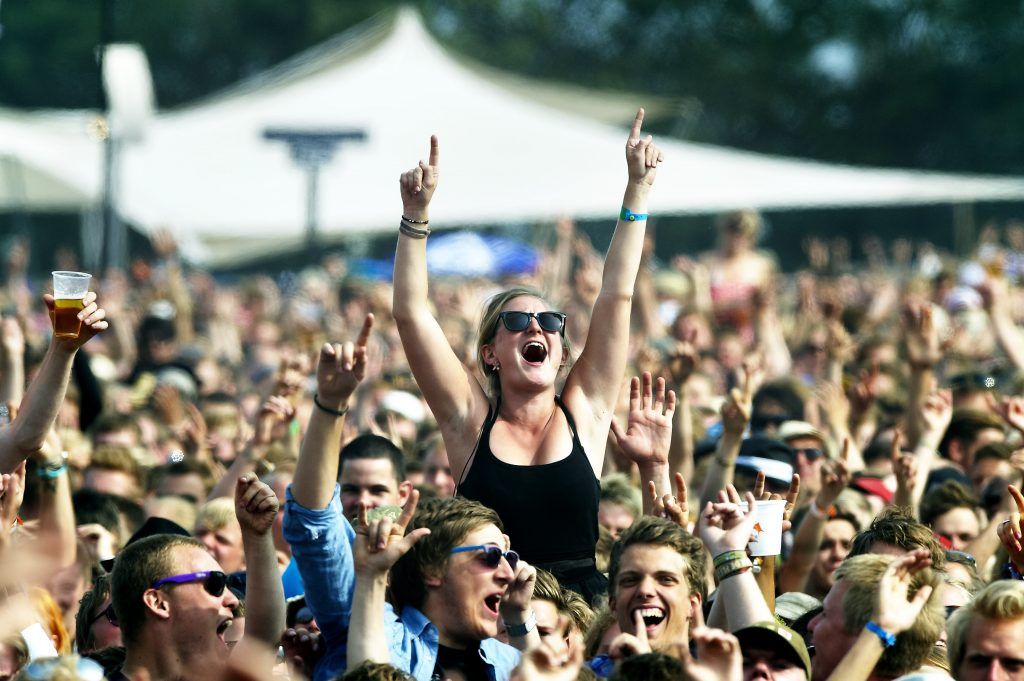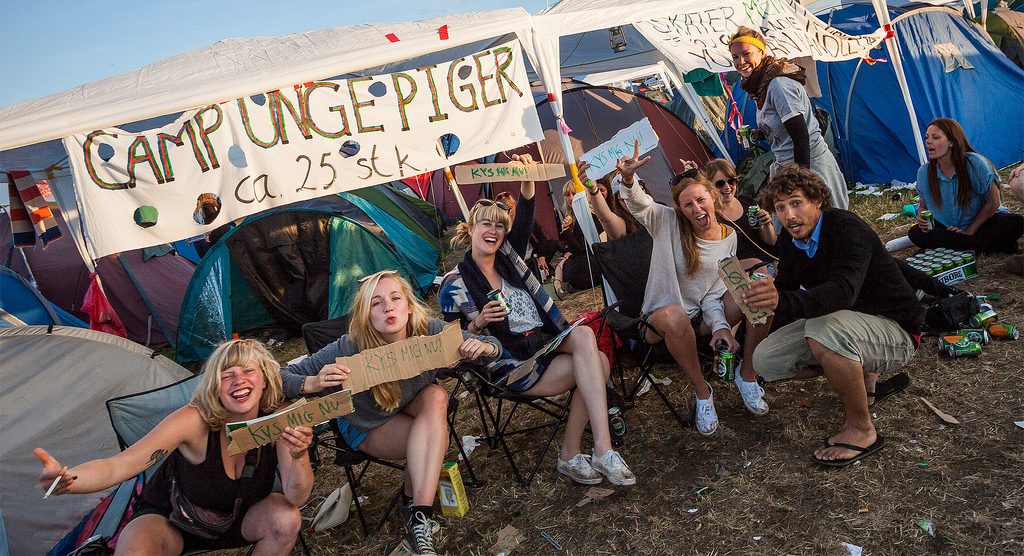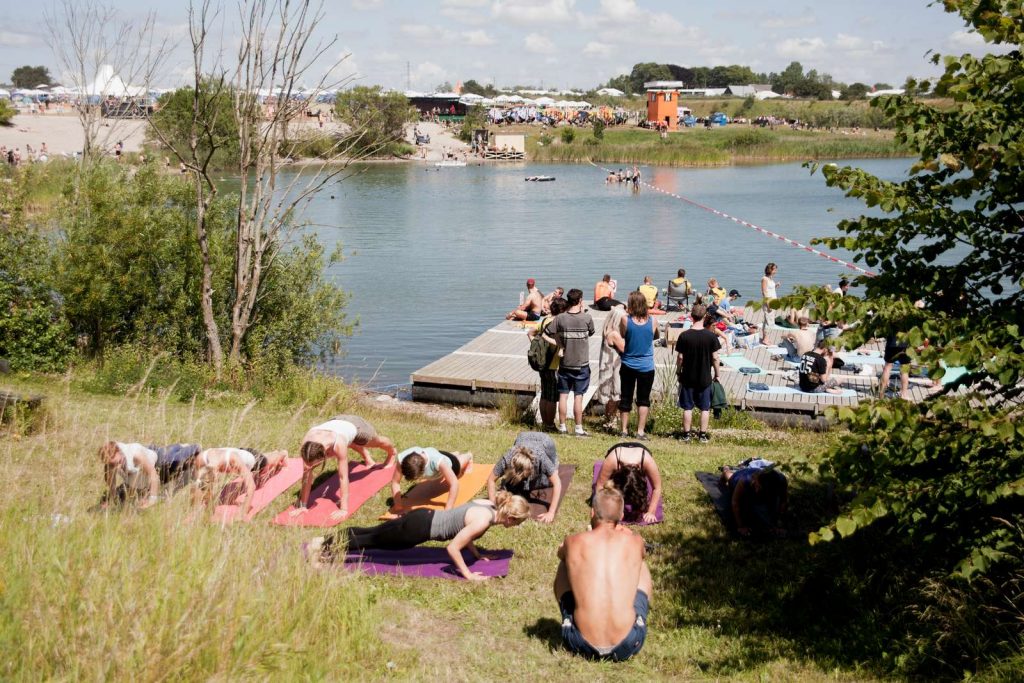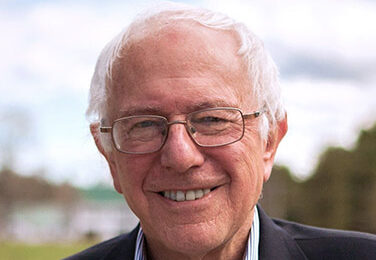Roskilde reigns as the heavyweight champion of Nordic festivals. High-profile line-ups and military-grade organisation support an annual crowd pushing 130,000 revellers. For one sweet week, the Roskilde Festival is the fourth largest city in Denmark. Its grounds cover a sprawling 2.5 million square metres, its artists spread across nine stages, and its operating budget pushes 200 million kroner this year.
It might come as a surprise, then, that this musical titan started off as two high school students’ pipe dream.
Book 1: Genesis
In 1971, gymnasium students Mogens Sandfær and Jesper Møller, then 17 and 18 years old, planted the seeds for today’s Roskilde Festival. Inspired by festivals such as 1969’s Woodstock, the pair sought to bring a similar experience to Denmark.
Then called the Sound Festival, the event took place over two days in late June, with only a single stage. Its focus was rock music, and artists such as Gasolin, Povl Dissing and Alrune Rod attracted 10,000 guests on each of the days. However, a ticket price of only 30 kroner left the festival short of breaking even, and the boys were forced to pay for some of the expenses out of their own pocket.
Each summer thereafter saw the festival picking up steam, slowly adding components of its modern form. In 1973, the event adopted Roskilde Festival as its official name. By 1980, the total attendance climbed to 50,000 guests. 1985 put the number of featured artists at 53, including Britain’s The Clash.
Even then, Roskilde was just getting started.
The teenage years
Roskilde Festival saw unprecedented growth in the 1990s, bringing it ever closer to its modern form. The festivities extended to a four-day event, incorporating eight stages. The artist tally was 149 by 1995, and the decade brought in some of its most distinguished guests yet: Bob Dylan, Aerosmith, Ray Charles, Radiohead and Nirvana, among many others.
By the turn of the millennium Roskilde towered above its competitors as the largest rock festival in Europe, with half of its guests coming from beyond Denmark. At this point, ticket prices had climbed from 1971’s paltry 30 kroner to a hefty 810.
Disaster strikes
In 2000, tragedy befell the Roskilde Festival. During a performance by Pearl Jam, a swarming crowd caused a group of audience members to lose their footing, falling onto one another and quickly piling up. Though the performance stopped and security rushed to the scene, it was too late – nine concert-goers lost their lives crushed in the pile-up, with an additional 26 injured.
The incident led to significant safety reforms at major festivals across Europe, and Roskilde continues to practise an extensive health and safety assessment every year. Today, a memorial site stands on the festival grounds, and Pearl Jam paid tribute to the victims with lyrics in their song ‘Love Boat Captain’.

Roskilde: The modern era
The 2000s saw continued growth on all fronts, and Roskilde Festival began to expand performances beyond rock music. Rock and metal icons such as Queens of the Stone Age, Rammstein and Judas Priest were joined by hip-hop giants like Kanye West, the Wu-Tang Clan and Snoop Dogg. Meanwhile, the big names got even bigger thanks to the likes of Prince, the Rolling Stones, Paul McCartney, Bruce Springsteen and Rihanna.
Recent years have seen Roskilde Festival grow to unprecedented levels, including a greater breadth of musicians than ever before. American folk songs, Brazilian samba, German techno and many more join the week’s soundscape – now an eight-day affair.
The festival has in recent years begun to expand its focus on social good, environment and sustainability. To date, the festival has donated some 320 million kroner to charity, having operated as a non-profit since 1972. The festival deploys an armada of 200,000 waste bins to collect trash and an estimated 8 million recyclable items. This year, 90 percent of the food sold at the festival will be organic.
For many, Roskilde is the year’s highlight – an unbridled streak of revelry, artistry and good company. The festival kicked off on Saturday June 24, with a Viking party (complete with mead and period music) and will run until Saturday July 1.


















